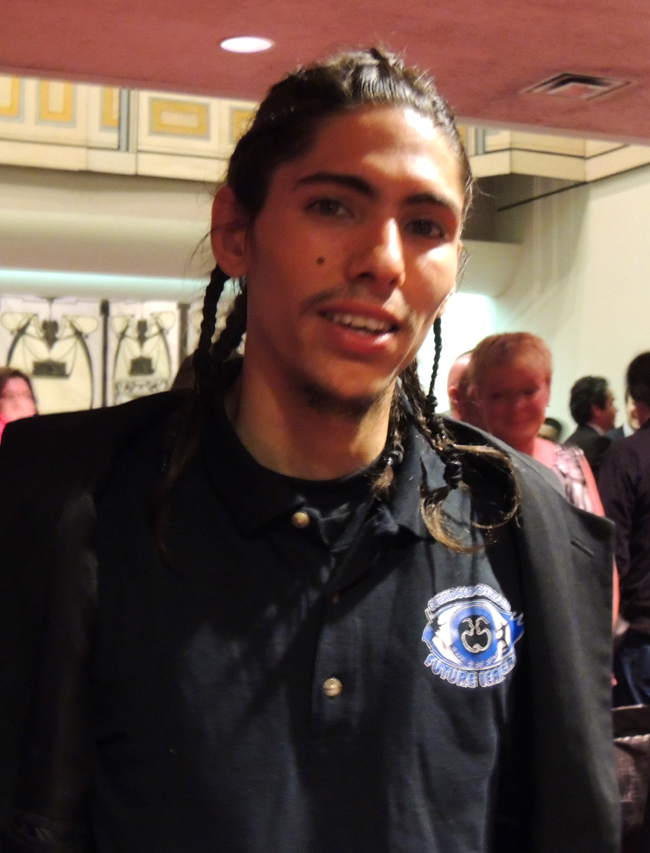Dance helps youth move from ‘outside’

By Christine Smith (McFarlane)
TORONTO – Outside Looking In (OLI), is a unique program that offers Indigenous youth a chance to express themselves through the arts and gain school credit for doing so.
This year OLI had their largest-ever participation rate, with 57 youth from across Canada gathering to present choreographed hip hop performances at Toronto’s downtown Elgin Winter Garden Theatre on June 4.
Outside Looking In was founded by Tracee Smith in September 2007. In its infancy, the program began as a sole proprietorship, but with its first successful show in May 2008, it fast became an official charitable organization in 2009.
“Working with the youth is obviously something I love to do. What drives me is that the kids have expanded their minds in one way by participating in our program,” she said.
Outside Looking In gives mainstream Canadians the opportunity to learn more about Indigenous peoples, beyond what they see and read in the media, through an annual multi-media performance in downtown Toronto. This year’s program involved three returning communities — Lac la Croix First Nation, Onigaming First Nation and Wikwemikong Unceded Indian Reserve – and one new one – Sandy Lake First Nation.
This year also marked the launch of a pilot program with youth from the Toronto Council Fire Native Cultural Centre, which may become a template for partnerships with other Friendship Centres and urban Indigenous organizations across Canada.
Criteria for participating in Outside Looking In require youth to maintain regular attendance throughout the school term, keep their grades up and attend all rehearsal and practice sessions. Upon successful completion of the program, the youth are brought from their home communities to Toronto for two weeks to prepare for the performance finale in a downtown theatre.
Participating First Nations are also required to implement at least one OLI course into their school calendar so students can earn school credits for participating. And for the past two years a Future Leaders Program has been in place to provide youth approaching graduation mentoring opportunities relevant to their future studies, employment, training and life goals.
Kodi Trudeau, 22, from Wikwemikong, danced in this year’s program and is involved in Future Leaders.
“I felt like I was a little part of something a lot bigger, and I became a part of OLI because I really liked how they reached out to communities that don’t have the opportunity to do things like this. I also love to do art, and this is another form of artwork.”
Future Leaders participants can attend a week long camp in March where they visit local colleges/universities, do career searches, resume writing, and attend a Mentor Day in Toronto that focuses on leadership.
“It’s hard but it’s well worth it in the end, and the payoff is amazing,” says Trudeau. “Tonight I am taking away the experience I had and what I have learned while in the program. I learned how to bank, manage money, discipline, perseverance, and dedication. And if you’re hurting, keep on moving.
“If you keep shooting for the stars, you’re bound to hit something. “Go for your dreams and follow your passion.”


